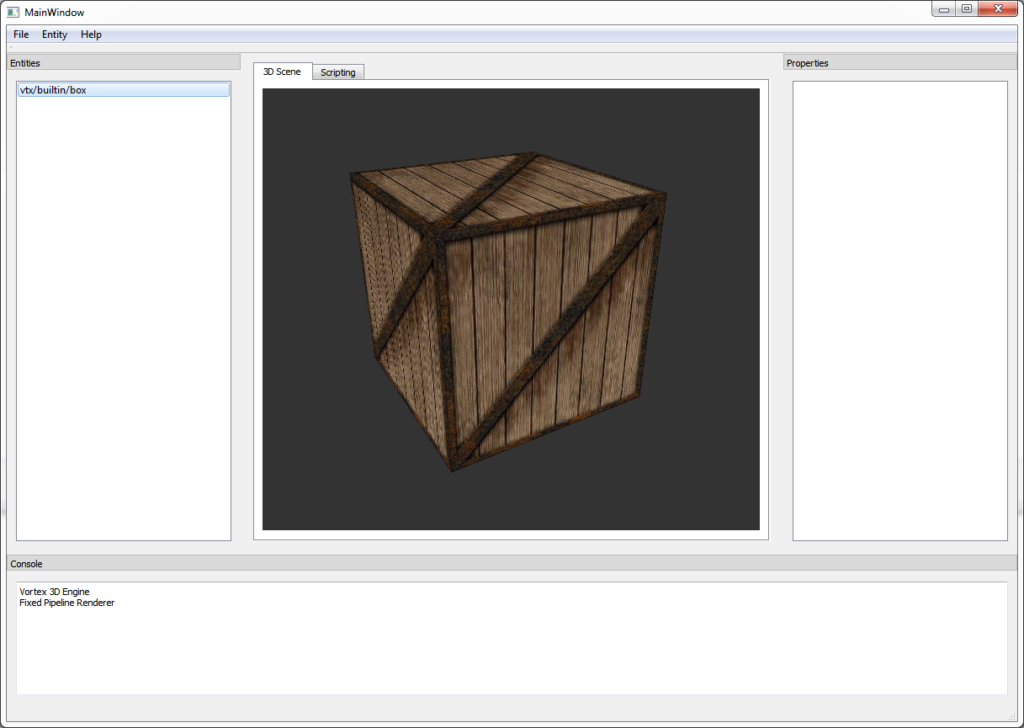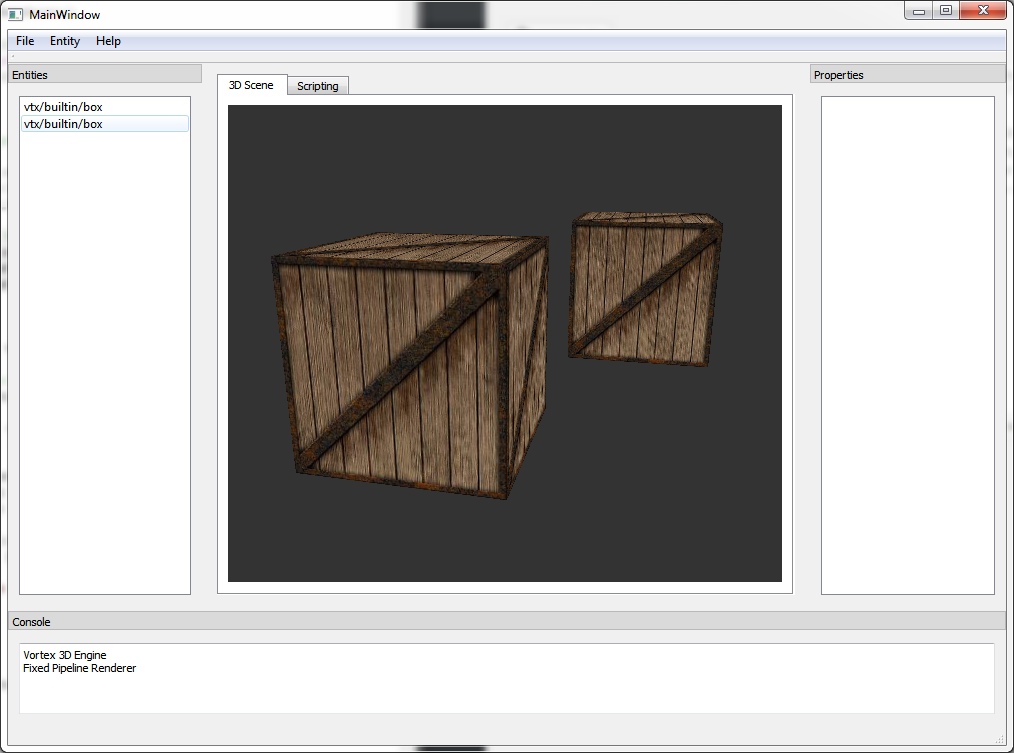Entity Management in Vortex
This week I started working on the foundation for entity management in the Vortex Editor.
“Entities” are a new concept I’m introducing in the next version of the Vortex Engine (V3), whose design responds to the larger effort of simplifying the engine’s API.

Entities in Vortex are high level objects that have a transformation, a material, a mesh and (of course) a name.
Down the line, the plan is that entities expose more properties. Custom shading and executable code are strong candidates that come to mind. As part of the Vortex Editor vertical slice, however, basic properties for placing entities in 3D space and drawing them are all we need.
Entities are also first-class citizens in the Editor, so I reworked the Editor’s UI to add two new panels: an entity list view and a property editor. The image below shows a scene setup with two box entities. Note their names listed in the panel on the left.

Because I wanted the contents of the entity list to be taken directly from the entity management component in the engine, I had to refactor the internal architecture of the Editor a bit. As it was standing before, the OpenGL View was the one handling the Editor Controller and -by extension- the engine.
This created a weird situation where the entity list view’s controller would have to go through the GL View to query the existing entities. This had to be fixed.
Thankfully, because the Editor Controller was fully encapsulating the engine, it was easy to move the instance of this class upwards in the object hierarchy without introducing undesired dependencies to Vortex’s core in UI classes.
All in all, the whole rework didn’t take as big of an effort as I had originally anticipated, and I’m pretty satisfied with the results.
The next step now is to expose entity instancing to the Editor UI! Stay tuned for more!